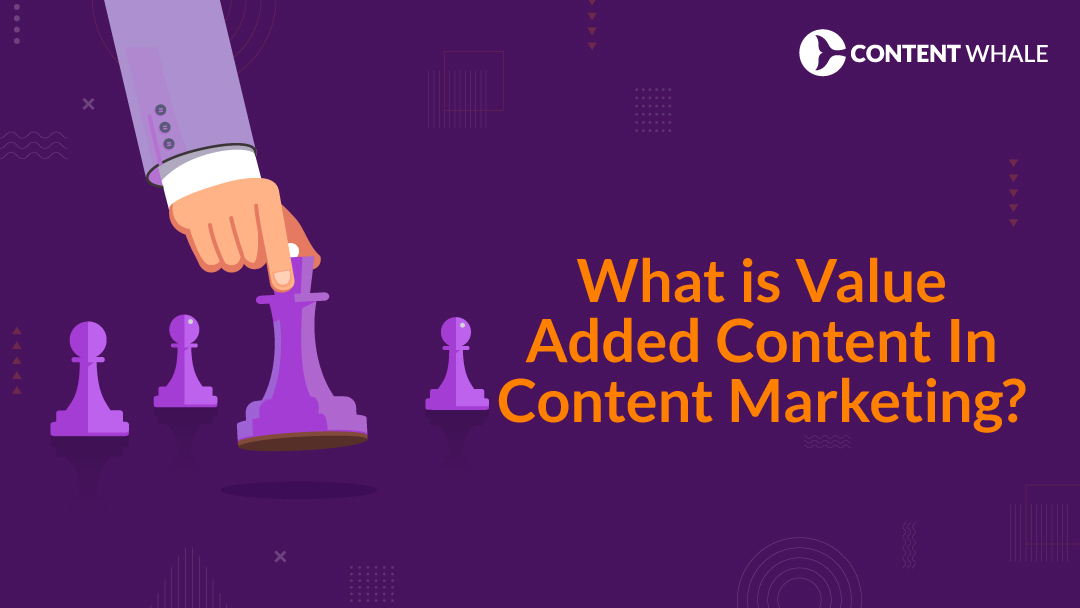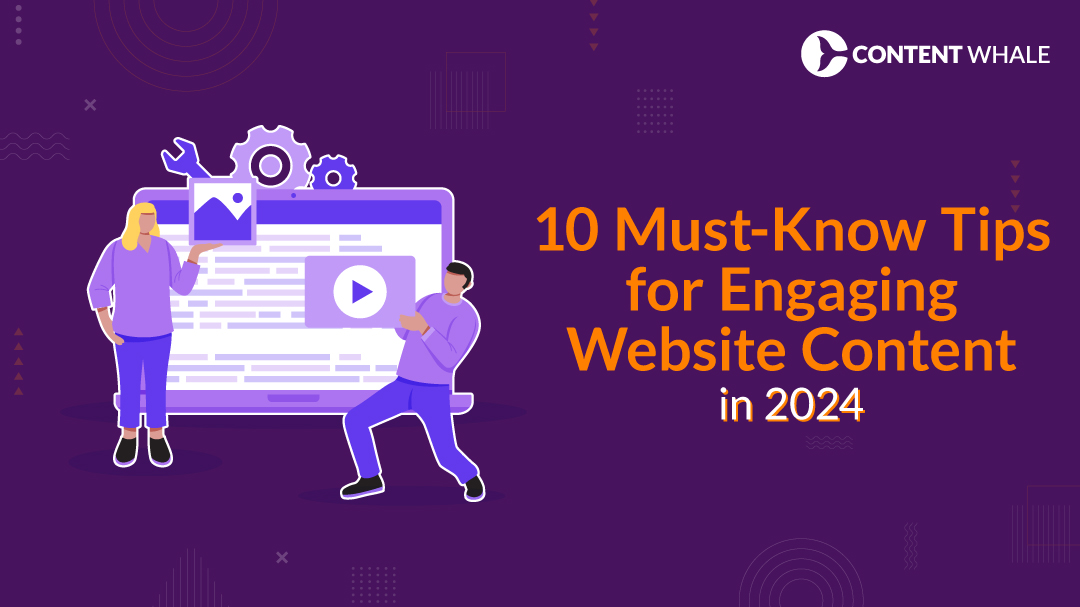Understanding what is value added content becomes pivotal when crafting strategies that stand out in today’s crowded digital channels. Value-added content refers to material that surpasses mere basic information, embedding additional features that cater specifically to the interests and needs of the audience.
This type of content drives deeper engagement by providing more than the expected insights or functionalities.
In the sphere of digital marketing, the significance of value-added content cannot be overstated. It serves not just as a means to inform but also to enrich the user experience with useful, actionable content that they cannot easily find elsewhere. By focusing on value content examples, businesses can demonstrate their expertise and commitment to providing extra value, thus fostering a stronger connection with their audience.
Moreover, addressing what is value-added content marketing and providing clear what is value added content examples are crucial.
These efforts showcase a company’s dedication to going beyond the norm to educate, engage, and inspire their customer base, thereby enhancing overall content quality and effectiveness.
This initial dive sets the stage for a deeper look into how value-added content can be conceptualized and utilized to maximize marketing efforts and achieve sustainable growth.
The Concept of Value-Added Content

What is value-added content? This question is at the heart of effective content marketing strategies. Value-added content significantly enhances basic information by incorporating features that provide additional benefits to the user.
Such content is designed to attract attention and offer genuine usefulness, setting it apart from more straightforward offerings.
The distinction between standard content and value-added content lies in the depth and utility each offers. Regular content might present the necessary information but often lacks the depth or practical application that characterizes value-added content.
On the other hand, value-added content goes further by embedding comprehensive insights, detailed analysis, or interactive components that actively contribute to the user’s understanding or capabilities.
This differentiation is crucial when discussing value-added content in digital marketing. Digital platforms thrive on engagement and interactivity, making value-added content a key player in sustaining user interest and involvement. By integrating more substantial, engaging elements, businesses can significantly enhance their digital presence and user satisfaction.
Moreover, effective examples of what is value added content marketing show how this approach can transform the standard content narrative.
For instance, a simple blog post that answers common questions in an interactive FAQ format or a video tutorial that not only explains but also demonstrates key processes in real time are perfect examples of value content.
Each value-added content example reflects a strategic intent to provide more than just information, aiming instead to deliver a memorable and impactful user experience that encourages further interaction and brand loyalty.
Through these methods, value-added content proves itself as an indispensable component of contemporary marketing efforts.
Benefits of Value-Added Content in Marketing

What is value added content can be measured not just in the quality of the content itself, but in its profound impact on marketing outcomes. By significantly enhancing brand reputation, value-added content positions a company as a leader within its industry. This is especially true in sectors where competition is intense and differentiation through quality information can directly influence consumer preference and trust.
The role of what is value-added content in digital marketing extends to fostering customer loyalty and engagement. When audiences encounter content that resonates on a deeper level—be it through personalized advice, comprehensive solutions, or interactive tools—they are more likely to develop a strong, loyal connection to the brand.
This kind of engagement is not just about repeated interactions; it’s about creating an emotional investment in the brand, which is a powerful driver for customer loyalty.
Moreover, the influence of value-added content on conversion rates and sales is undeniable. Engaging and insightful content captures the attention of potential customers, providing them with the information and reassurance they need to make purchasing decisions.
For instance, detailed product reviews, user-guided tutorials, and enriched product descriptions can help demystify products or services, thereby reducing the anxiety associated with online purchases and increasing the likelihood of conversion.
Furthermore, value content examples often show that when content addresses specific user concerns with authority and depth, it elevates the user’s shopping experience. This approach not only informs but also entices, leading to increased sales and enhanced ROI from marketing campaigns.
By effectively leveraging value-added content marketing, brands can transform their content hubs into profitable assets that contribute directly to the bottom line.
In essence, each what is value added content example serves as a testament to the powerful role of sophisticated content strategies in today’s digital marketplace. Through thoughtful and well-executed content enhancements, companies can achieve a wide range of marketing goals, from increased brand visibility to improved customer retention and higher sales.
Examples of Value-Added Content

1. Video Tutorials and How-To Guides
Video tutorials and how-to guides are prime examples of value-added content, particularly because they cater directly to the user’s need for practical, actionable information.
For example, Moz’s “Whiteboard Friday” series is highly regarded within the SEO community for its in-depth explanations and practical advice, presented in an engaging video format. These videos not only educate but are structured to be easily shareable and capable of attracting significant viewership, thus enhancing both reach and retention.
2. E-Books
E-books are a deeper dive into topics that demand more comprehensive coverage than a blog post or article might allow. They are particularly effective in content marketing strategies as they can consolidate a vast amount of information into a single, downloadable resource.
E-books like those offered by HubSpot serve not just as information troves but also as tools for lead generation, drawing in users with the promise of extensive, well-researched content.
3. Newsletters
Newsletters offer a regular touchpoint with audiences, curating content that keeps subscribers informed and engaged. They can compile the most pertinent news, insights, and resources, saving users time and keeping them updated on industry trends without the need for them to seek out information independently.
Benedict Evans’ newsletter is an example of this. It aggregates key tech developments and provides curated insights valued by professionals and enthusiasts alike.
4. Webinars
Webinars provide a platform for in-depth learning and can be a significant value addition, especially when they cover new research or detailed insights into specific products, services, or techniques.
The Content Marketing Institute, for example, uses webinars to deliver expert knowledge and advice, helping marketers stay on top of current trends and best practices. These sessions not only educate but also engage audiences through live interactions, Q&A sessions, and the provision of exclusive content that attendees can’t get elsewhere.
5. Workshops
Workshops, especially those conducted online, combine the interactive benefits of a physical workshop with the accessibility of digital platforms. They allow for real-time interaction, providing a platform for immediate feedback, live demonstrations, and detailed explanations.
This setup not only enhances learning and retention but also boosts engagement by allowing direct communication between the presenter and the audience.
6. Blogs
Blogs are perhaps the most versatile form of value-added content, capable of covering a wide range of topics in various formats.
Whether providing expert analysis, opinion pieces, or detailed guides, blogs allow for a personal touch and direct communication with the audience. They are essential tools for establishing thought leadership and for keeping content fresh and relevant.
7. Infographics
Infographics offer a visual representation of data or knowledge that might otherwise be dense or challenging to digest. By breaking down complex information into digestible, visually engaging components, infographics can significantly enhance understanding and retention.
They are particularly useful in scenarios where data needs to be conveyed quickly and clearly, making them a staple in digital marketing efforts.
Each of these content types exemplifies how adding value beyond the basic can enhance engagement, educate the audience, and drive conversions, making them invaluable components of a robust digital marketing strategy.
Implementing Value-Added Content in Your Strategy

To effectively incorporate what is value added content into your marketing efforts, the initial step involves identifying opportunities where your content can significantly enrich the user experience.
By analyzing existing content and audience feedback, companies can pinpoint areas where additional information, tools, or resources could address specific needs or enhance understanding. This tailored approach ensures that the content not only attracts attention but also delivers tangible benefits to the audience.
Creating high-value content that resonates with your target demographic requires a focused approach. What is value added content in digital marketing thrives on relevance and utility. When developing content, it’s essential to center on topics that matter most to your audience, presenting information in an engaging and accessible manner.
Utilizing formats that promote interaction or provide step-by-step guidance can transform a standard piece into a valuable resource, thus enhancing audience engagement and satisfaction.
Measuring the impact of your what is value added content marketing efforts is crucial for sustained success. Tracking engagement metrics such as views, shares, time spent on page, and conversion rates provides insights into how well your content is performing.
Additionally, feedback mechanisms like comments or surveys can offer direct input from your audience, helping to refine and optimize the content strategy continually.
By strategically identifying the right opportunities, crafting content that truly speaks to and engages the audience, and rigorously measuring outcomes, brands can leverage what is value added content to not only meet but exceed their marketing objectives. Each interaction with value-added content can enhance the perception of a brand, strengthen customer relationships, and drive business growth.
Challenges in Creating Value-Added Content

1. Resource Allocation
One significant challenge in producing what is value added content is effectively managing resources such as time, budget, and personnel. Content creation is resource-intensive, requiring skilled writers, designers, and strategists who can produce and maintain the quality expected of value-added content.
Without adequate resources, the quality and frequency of content can suffer, which may impact the overall effectiveness of a digital marketing strategy. To mitigate this, businesses must prioritize budget allocations, ensuring that content production is sustainable and that there is a balance between quality and quantity.
2. Idea Generation
Generating new and innovative ideas consistently is essential for keeping content fresh and engaging. However, this is often a major challenge, especially for brands that need to produce content regularly. The pressure to continuously come up with unique ideas that resonate with an audience can be daunting.
Marketers can overcome this by fostering a culture of creativity within their teams, encouraging the sharing of ideas, and regular brainstorming sessions. Additionally, staying informed about industry trends and customer feedback can provide new angles and inspiration for relevant content.
3. Maintaining Creativity and Relevance
Keeping content both creative and relevant is crucial for engaging the audience and adding value. As consumer preferences and digital platforms evolve, so must the content. This requires a deep understanding of market dynamics and audience needs.
Marketers should leverage analytics tools to track engagement and gather insights on what types of content perform best. This data can inform content updates and adaptations, ensuring that the content remains not only creative but also aligned with audience interests and behaviors.
By addressing these challenges through strategic planning, continuous learning, and leveraging technology, marketers can enhance their capability to produce value-added content that achieves their business goals and resonates with their audience.
Each challenge presents an opportunity to refine and improve the content marketing strategy, ultimately leading to better customer engagement and business outcomes.
Future of Value-Added Content

1. Personalization and Interactivity
The future of what is value added content is significantly shaped by personalization and interactivity. As digital platforms evolve, the capability to tailor content based on user behavior and preferences becomes more sophisticated.
This means content that not only engages but also adapts in real-time to the interactions of the user. For example, an eCommerce site could use browsing behavior to dynamically alter its content, offering personalized shopping advice or product recommendations. Similarly, educational platforms can adapt learning materials based on the pace and performance of the learner, making the educational content more effective.
2. Integration of AI and Machine Learning
What is value added content in digital marketing will increasingly rely on artificial intelligence (AI) and machine learning (ML) to enhance content creation and distribution. AI can analyze large sets of user data to identify patterns and preferences, enabling content creators to produce highly targeted and relevant content.
Machine learning algorithms can automate routine content generation tasks, freeing human creators to focus on more complex and creative aspects of content production. This trend points towards a more efficient, responsive, and personalized content creation landscape, where content is optimized continuously to meet user demands.
3. Emerging Content Formats and Delivery Methods
The continuous evolution of digital media platforms introduces new content formats and delivery methods, pushing marketers to innovate continually. Augmented reality (AR), virtual reality (VR), and mixed reality (MR) offer immersive experiences that can transform standard content into interactive and memorable encounters.
Additionally, the rise of voice search technology and smart home devices necessitates content optimization for voice queries, making audio content an increasingly important part of the content strategy. These technologies encourage brands to think beyond traditional text and video, exploring how emerging formats can enhance user engagement.
4. Sustainability in Content Production
Sustainability is becoming a priority in content production, reflecting broader societal shifts towards environmental consciousness. Brands are expected to consider the ecological impact of their content production processes and to promote sustainable practices through their content.
This could involve using energy-efficient servers for hosting digital content, reducing waste associated with physical promotional materials, and encouraging eco-friendly behaviors through educational content. As consumers become more environmentally aware, they increasingly favor brands that demonstrate a commitment to sustainability.
Each of these sections highlights a trend that will shape the creation and consumption of value-added content in the years to come, emphasizing the need for brands to adapt and innovate continuously to stay relevant and effective in their marketing efforts.

1. How do I determine if my content is considered value-added?
To assess whether your content qualifies as what is value added content, evaluate its ability to provide additional, meaningful information that goes beyond the basic. Content that offers depth, enhances understanding, or delivers practical tools and solutions can be categorized as value-added.
Regularly gathering feedback from your audience and analyzing engagement metrics can also provide insights into how your content is perceived and the value it offers.
2. What are the best tools for creating value-added content?
The best tools for crafting what is value added content in digital marketing include content management systems (CMS) like WordPress for blogging, Adobe Creative Suite for multimedia content, and Google Analytics for tracking engagement and results.
Interactive content tools like Outgrow and Apester can help create quizzes, polls, and interactive infographics that engage and deliver personalized experiences to users.
3. How often should I update my value-added content?
Updating your value-added content should be a regular part of your content strategy to ensure it remains relevant and effective. The frequency of updates may depend on the type of content and its subject matter.
For rapidly changing industries, more frequent updates may be necessary to keep the content current. Generally, reviewing and updating content every 6 to 12 months is a good practice.
4. Can value-added content work for any industry?
Yes, what is value added content is applicable and beneficial across all industries. Whether it’s healthcare, finance, education, or entertainment, all sectors can leverage value-added content to inform, educate, and engage their specific audience. The key is to understand the unique needs and preferences of your industry’s audience and tailor your content accordingly.
5. How does value-added content influence SEO?
Value-added content significantly impacts SEO by increasing user engagement, reducing bounce rates, and enhancing the likelihood of backlinks.
Search engines favor content that users find helpful and relevant, which is often reflected in longer dwell times and higher interaction rates associated with value-added content. Properly optimized with keywords, such content also improves visibility and rankings in search engine results.
Each of these questions underscores the importance of integrating what is value added content marketing into your overall strategy.
By focusing on creating high-quality, relevant, and engaging content, businesses can not only meet their marketing goals but also build lasting relationships with their audience.





